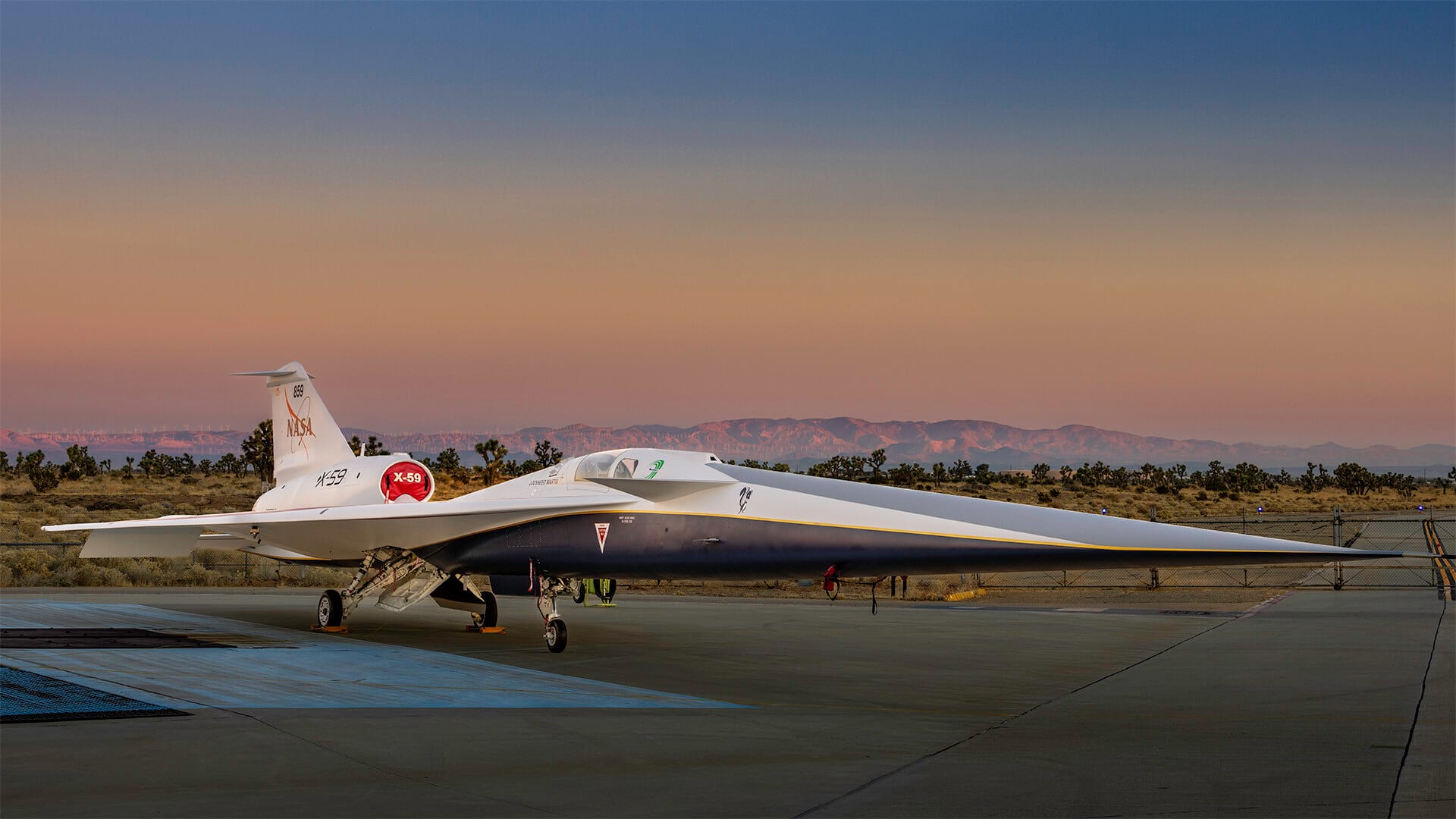
NASA's X-59 supersonic jet nears first flight, passes engine tests
What's the story
NASA's revolutionary X-59 jet, or the Quiet SuperSonic Technology (QueSST) aircraft, has passed its first engine tests. The trials were held at Lockheed Martin's Skunk Works facility in Palmdale, California. They started on October 30 and included running the engines at low speeds (without ignition) to detect any leaks and confirm all systems worked together.
Test phases
X-59 jet's engine tests: A 2-phase process
The testing of the X-59's engines was conducted in two stages. Following the preliminary checks, the team fueled up the aircraft and tested its engine on low power. Jay Brandon, Chief Engineer for the X-59, explained that "the first phase of the engine tests was really a warmup to make sure that everything looked good prior to running the engine."
Engine activation
Engine exits preservation mode
The second phase of testing was the actual first engine start. This step took the engine out of its preservation mode, marking its first operation since installation on the aircraft. Brandon said that it was "the first check to see that it was operating properly and that all the systems it impacted — hydraulics, electrical system, environmental control systems, etc. — seemed to be working."
Aircraft features
Unique design and performance capabilities
The X-59 will cruise at a speed of Mach 1.4 (1.4 times the speed of sound) and at an altitude of 55,000 feet (16.7km). It will be powered by a modified F414-GE-100 jet engine from General Electric, which is a common feature in military aircraft such as some variants of the Boeing F/A-18 Super Hornet flown by the US Navy. Its unique design features an elongated nose section that minimizes sonic booms to a soft "thump."
Pilot view
Cockpit and vision system
The X-59's long nose restricts pilots' forward vision. To counter this, the aircraft comes with an "eXternal Vision System," or XVS. It features a camera connected to a screen in the cockpit that employs augmented reality tech to improve pilots' forward visibility. NASA Deputy Administrator Pam Melroy lauded this tech as "a beacon guiding us toward a future where visibility barriers in aircraft design can be overcome with this inventive solution."
Future plans
Upcoming tests and 1st flight
The next phase of testing will see data being fed into the aircraft's computer systems under normal and failure conditions. After this, the X-59 will be subjected to taxi testing to evaluate its control surfaces, brakes, and engine performance on the ground. While a date for the X-59's maiden flight is not set yet, it will fly over selected US cities where researchers will collect data about its quieter sonic "thumps," including public's perception and response to the noise impact.
Concerns
X-59 aims to revolutionize air travel
The X-59 is engineered to break the sound barrier without producing the loud sonic boom usually associated with supersonic speeds. Currently, the FAA restricts supersonic flight above the land within a certain distance of the US. With the X-59, NASA aims to prove that supersonic travel can be quiet. If the aircrafts can be designed to achieve this, they can be used for domestic flights, potentially cutting times in half, and benefiting commercial air travel, disaster response, and medical transport.